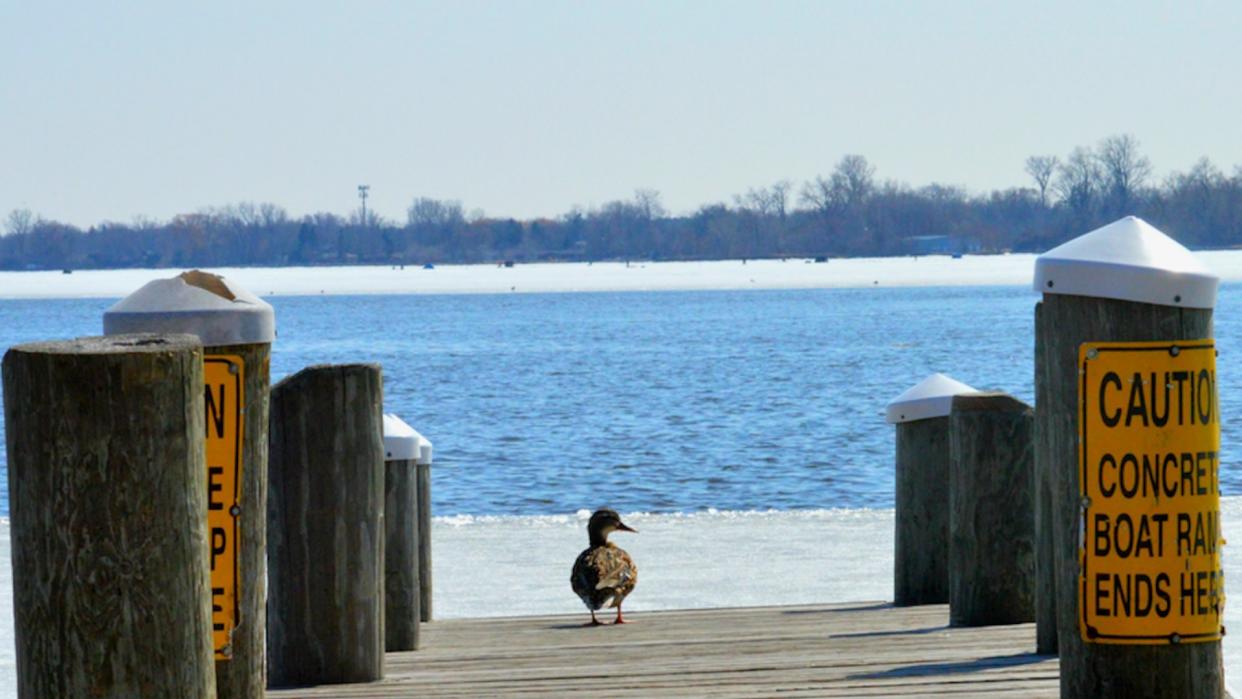Satellite images reveal concerning pattern in ice-covered lakes: 'We already have hundreds of lakes that are free of ice'

Ice cover on lakes in the northern United States was more sparse than usual amid a record-setting warm winter. While boats were able to navigate the waters earlier than expected, that isn't something all residents are celebrating.
What's happening?
The Washington Post detailed how states such as Maine, Wisconsin, Minnesota, and New Hampshire had ice retreat in their lakes amid spring-like conditions.
"In a normal-ish year, the last week of March is when we start thinking about ice-out," said climatologist Pete Boulay, who works for the Minnesota Department of Natural Resources. "We already have hundreds of lakes that are free of ice."
Ice-out, the time when boats can safely travel on the waters, occurred roughly a month earlier than average at Clear Lake based on records dating back to 1874.
Meanwhile, in Wisconsin, warmer temperatures impacted sturgeon spearing efforts at Lake Winnebago. Hunters weren't able to take their trucks onto the ice, and when the season wrapped up Feb. 25, the harvest was "well short" of conservation limits.
New Hampshire even had to cancel some lake-related events.
Watch now: Solar-powered boats from the Honnold Foundation are making a difference in the Amazon
"Ice-out was almost an anticlimax this year because there was barely any ice-in," Lake Winnipesaukee Sailing Association volunteer Al Posnack told the Post.
Why is this concerning?
El Niño contributed to the warmer-than-average winter, as the Post pointed out, and the naturally occurring weather phenomenon is known to contribute to extreme weather.
However, human-generated pollution has caused global temperatures to rise. That has led to more severe and frequent weather events — and intensified existing patterns.
The National Oceanic and Atmospheric Administration found that ice cover on the Great Lakes "peaked at 16%" this winter, a historic low.
Pat Tarpey, who leads a New Hampshire nonprofit that protects Lake Winnipesaukee, told the Post that the early spring also raised concerns about public health. Last year, the lake experienced toxic algae blooms amid warmer temperatures.
"We're concerned that in the coming season, we're going to see a lot more," she said.
What can be done about warming global temperatures?
Experts agree that gas, coal, and oil are the primary contributors to the issue, so transitioning away from them is essential. The United Nations notes that almost 90% of carbon pollution is generated by the burning of these dirty fuels as well as more than 75% of all planet-warming gases.
In the United States — and other countries around the world — investments in cleaner infrastructure by the government and private entities are helping to transform the electrical grid and transportation systems.
Using LED light bulbs and walking, biking, or taking public transportation are simple ways to help reduce harmful pollution from daily activities.
Join our free newsletter for cool news and cool tips that make it easy to help yourself while helping the planet.

